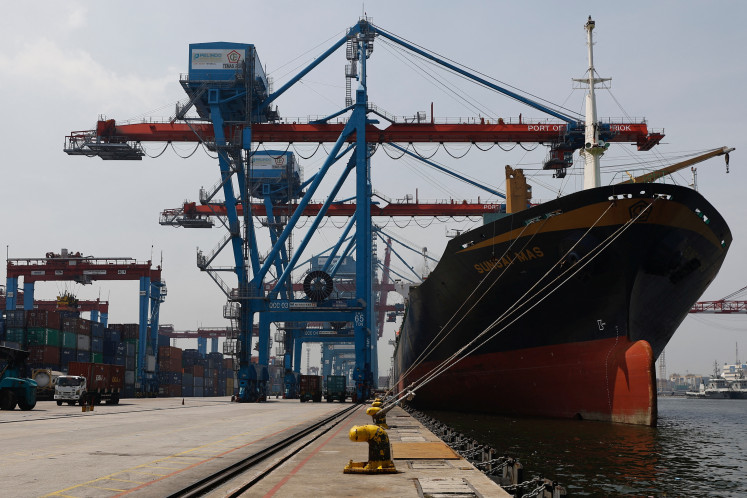Warming causes bleaching
A recent survey conducted by the Reef Check Indonesia Foundation (YRCI) revealed around 30 percent of reefs in northern Balinese waters have suffered mass bleaching
Change text size
Gift Premium Articles
to Anyone

A
recent survey conducted by the Reef Check Indonesia Foundation (YRCI) revealed around 30 percent of reefs in northern Balinese waters have suffered mass bleaching.
Similar phenomena, found at several prominent dive sites in South Bali, experts believe were triggered by global warming.
The foundation's expert Jensi Sartin disclosed that, according to the resilient force theory, the mass bleaching was due to increasing sea temperatures. Coral reefs, which have a low level of ambient water movement, are more vulnerable to the impact of the changing temperature, which includes bleaching.
"Such conditions may *trap' the heat in the water which lead to the reefs' mass bleaching," said Sartin while carrying out the survey over the weekend at Pemuteran Bay in Gerokgak subdistrict, Buleleng regency.
The YRCI recorded that during April the weather around Pemuteran Bay was quite hot and bright, with little or no cloud cover. The hot sun shining on the surface of the sea had heated it up and released microscopic algae from the reefs, triggering the bleaching.
In theory, he stressed, the reefs could adapt quite well to such conditions. However, the reefs in the waters off northern Bali have already struggled against other threats, such as damaging sedimentation, waste and garbage disposal and powerful tidal waves. It is feared the presence of yet another threat, in this case global warming, will inflict massive damage on the reefs.
"It could damage several square kilometers of reefs," Sartin warned.
He said through direct observation of 11 reef locations in the island's western, northern and eastern waters, the YRCI found the level of reef bleaching in Pemuteran Bay, Lovina, Sembiran, Bondalem, Tejakula, Penuktukan, Tulamben, Amed, Padang Bay and Sanur was less than 10 percent of the total reef area. However, the surveying divers established that at the Bio Rock reef colony in Pemuteran Bay, the bleaching had affected more than 50 percent of the colony.
The survey showed at Spice beach, Sembiran beach, Bondalem, Tejakula and Penuktukan in Buleleng, the reefs' mass bleaching had reached up to 30 percent. Similar damage was observed on Karangasem's Liberty shipwreck, one of the island's most popular diving sites, and in Lipah beach, it was 40 percent.
"We have not yet received any reports of mass bleaching in Padang Bay and Sanur. Nevertheless, we are still on alert," he added.
Despite the global warming factor, the survey revealed the mass bleaching might also be caused by Drupella predator snails. The Drupella population has allegedly bloomed in Balinese waters since November. The Bio Rock Center said its diving team had pulled out 26,374 sea snails from one single dive site during a survey from early November 2008 until June 2009.









